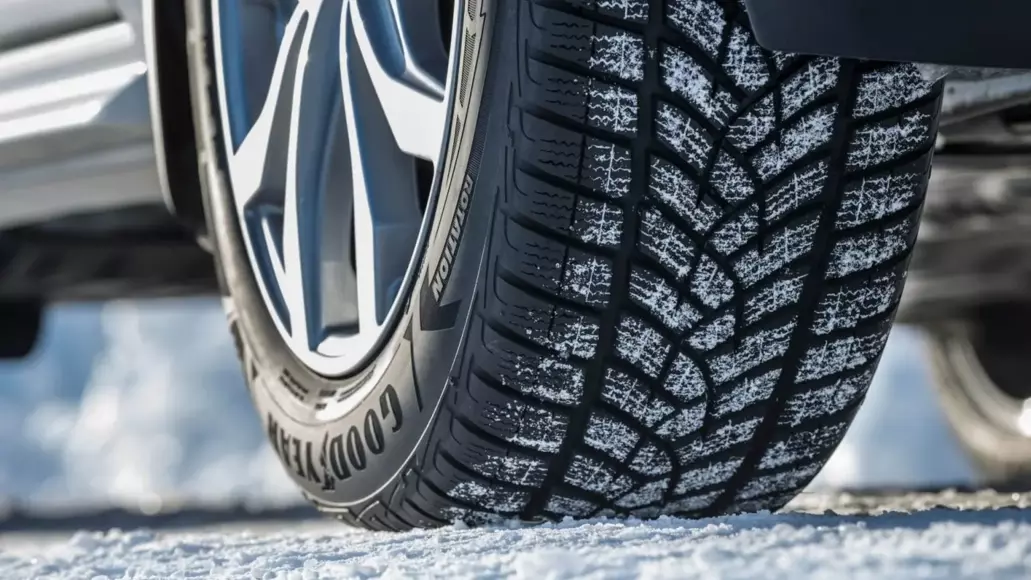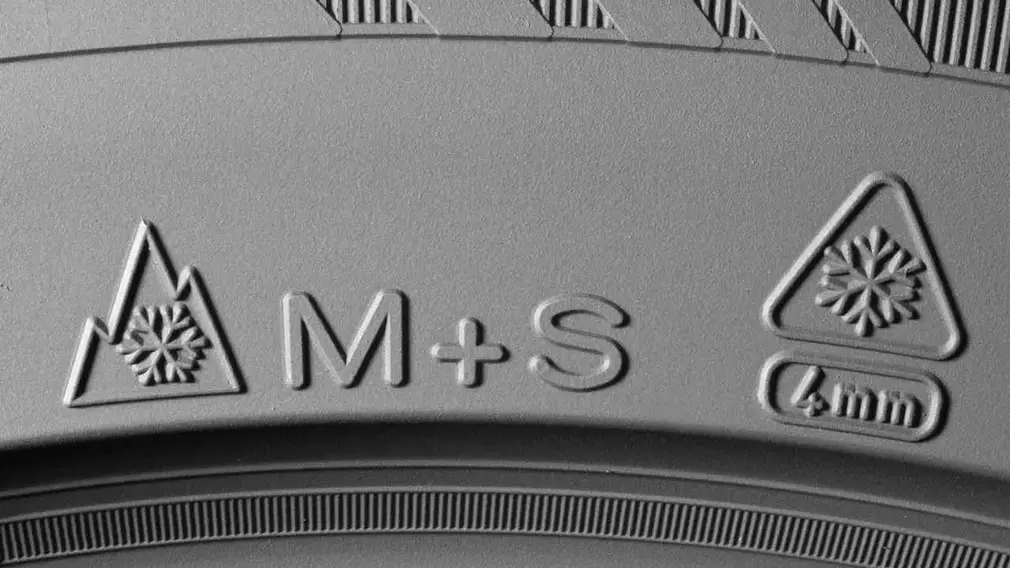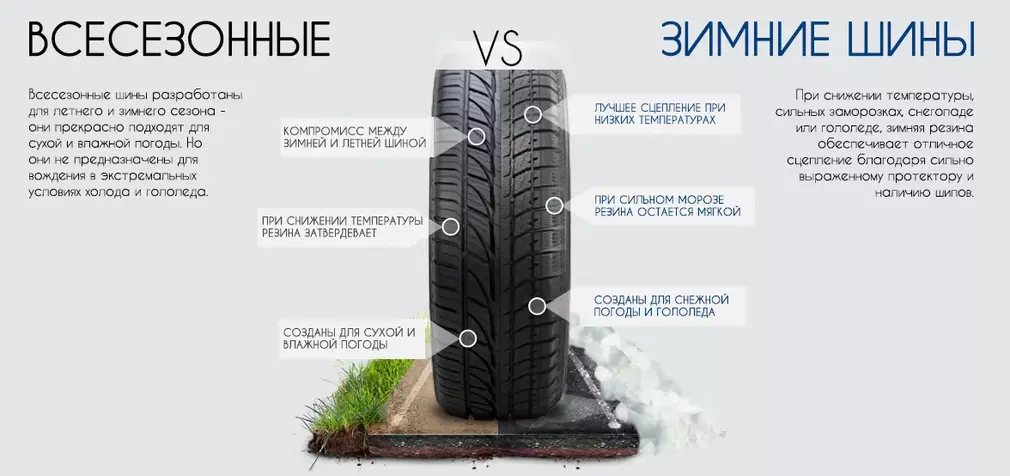
Drivers are accustomed to changing tires at least twice a year on their own in the garage or at the tire service, changing from "winter" to "summer". But the store has all-season tires. According to manufacturers, the tires are versatile and suitable for year-round use. Let's figure out whether the all-season is really so good or whether the rationality of its operation is exaggerated.
All-season tires are universal tires that do not have pronounced characteristics. Accordingly, it can be attributed to both summer and winter.
This rubber is designed to provide good ride safety and handling in a wide variety of weather conditions. In fact, such tires are a middle or intermediate option between models intended only for winter or summer. The uniqueness lies in the special tread pattern - low, represented by small blocks and sipes.
In practice, the models are devoid of significant advantages of winter and summer tires, respectively, they are not used for driving at temperatures below -10 degrees and above +25 degrees. But it is an excellent solution for countries with a temperate climate. Therefore, if you are planning to travel to another country, it is rational to order a rental service abroad.
Initially, the all-season was developed for American roads and temperate climates, that is, without very hot weather or too severe frosts. It does really well when there are no weather highs and lows. The recommended operating temperature is usually in the range from -7 to +20 degrees. Accordingly, universal tires are softer than summer tires, but harder than winter ones.
By the way, at the exit from the factory, each car is equipped with all-season tires. This allows both manufacturers and dealers and subsequently drivers to get rid of the headaches associated with the change of season.
Important! This is especially true for car sellers, because without universal tires, they would have to change tires for each season of the year on cars that are on display.
At low temperatures, tires designed for use in the hot season become stiff, resulting in poor handling. To create winter tires, a softer material is used, but at positive air temperatures, its service life is reduced. High-quality all-season tires on a car have a well-thought-out composition. The manufacturer takes into account the characteristics of the tire that affect the contact patch with the road, the geometry of the pattern and the height of the tread. When choosing all-season tires, it is important to consider quality and compliance with the requirements.
All-season tires are of the highest quality these days. It is suitable if the motorist rarely uses the car and drives only in urban mode and not at high speed, if the winter is mild, the summer is not too hot. All-season tires are undesirable if the temperature in winter often drops below zero. In any case, demi-season tires must be of high quality.
To translate in an all-season really universal tires for our roads turned out to be at a high level. But there are still a number of features and disadvantages.
Let us examine in this article what are the distinguishing features of all-season tires.
Consider the labeling when planning to buy all-season tires for your car. It's important to figure out the pros and cons.
All-season tires are distinguished by their markings. It depends on the brand. Often meets:
There is a marking of all-season tires in the form of the "Sun / Snowflake" symbol. A large number of designations can cause confusion - what to choose, which rubber is better. In fact, they are one and the same type of tire and their characteristics are almost identical.

All-season tires pleases with a significant number of advantages. But there are some downsides.
Key benefits:
There are a lot of pluses. They explain the popularity of the all-season.
The all-season tire also has its drawbacks. One of them is the average character of control, that is, in severe frosts or heat, driving comfort cannot be achieved.
In the summertime, fuel consumption increases as the rubber is very soft. Moving on a road that is too snowy is also inconvenient, since the drawing is not too large and sometimes there is not enough depth.
Another disadvantage is the price. It is slightly higher than for summer models. It can be concluded that all-season tires, despite their versatility, are somewhat specific.
All-season tire with studs and Velcro. Thanks to them, it is possible to achieve good grip on the asphalt to increase the level of stability. In practice, this results in increased fuel use.
This is also influenced by the excessive softness of the all-season. When driving on hot asphalt, Velcro and spikes wear out faster, which impairs their performance in winter.
Important! The car's handling on hot asphalt is worse than that of summer models.
In winter, the main disadvantage is the lack of grip on the road is average. The reasons should be noted that the rubber is not soft and flexible enough, since if the temperature drops below -10 degrees, the tire will harden.
It is worth noting the lack of a sufficient number of spikes and velcro, their modest size. They are not able to adequately adhere to the road surface, respectively, the quality of handling on snow and ice is much worse.

All-season is great for those regions where the temperature in winter does not drop below -10 degrees and does not rise above +25 degrees in summer. All-season rubber will withstand deviations from these temperatures, but its performance will deteriorate faster. The tires are suitable for those drivers who use the car for short distances - only from home to work and within the city center.
Important! Such rubber is ideal for roads with temperate climates. This prevails in the United States, in some European countries, in the south of Ukraine.
If you are planning to buy all-season tires, you must take into account the peculiarities of the climate of the region. It is comfortable to ride an all-season in spring and autumn, when such tires have practically no drawbacks.
It is most convenient to buy all-season tires in the online store. There are several reasons. The largest selection for cars is offered online. There is no need to go anywhere and waste time looking for a specialty store. Prices are often an order of magnitude lower, since there is no need to pay for the rent of the store, etc. Delivery is promptly carried out by convenient transport companies throughout Ukraine.
The purchase will be profitable, and driving on the roads is safe and comfortable. And if you do not want to worry about tire changes or other nuances, book a car for rent from BLS. You can find different cars at reasonable prices with delivery to the right address. And then you will be able to travel comfortably around the city or beyond.